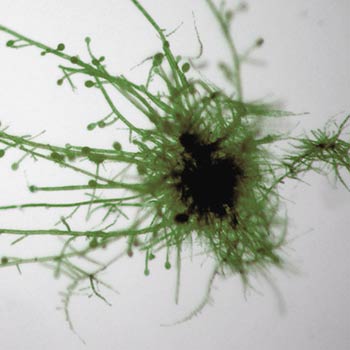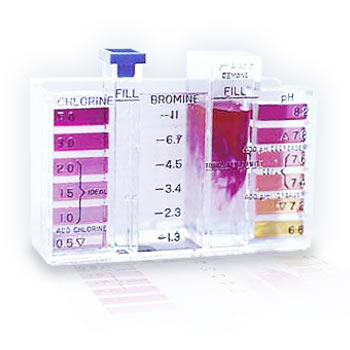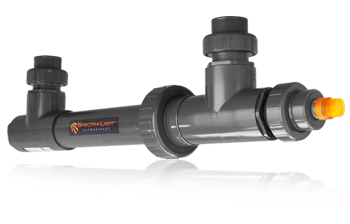Shopping Cart
All orders qualify for risk-free 30 day trial & complimentary US shipping!
-- No items so far --
Total:
0
Support
Need help? Our Pool Experts are here to help.
All orders qualify for risk-free 30 day trial & complimentary US shipping!
-- No items so far --
Total:
0
Need help? Our Pool Experts are here to help.
Of all the problems affecting swimming pools, many would name pool algae as the most common. But it may surprise you that algae are one of the easiest problems to avoid. But it can be a pain once you’ve got it. Let’s explore the how and why of this frustrating, single-celled plant called pool algae.
Algae are single-celled plants that contain chlorophyll. They are some of the hardiest and most widespread organisms living on the planet today. They’ve had a long time to evolve and adapt. Scientists tell us they were one of the very first life forms on the planet. Now there are more than 30,000 different types of algae. Their seeds, called spores, are constantly dropped in swimming pools by rain, wind, leaves, and other debris. It doesn’t take much to make algae happy. Give it warm water, sunlight, and carbon dioxide and it will thrive. And algae love pool owners who allow their pool water to sit stagnant for hours. There is no need for stagnant water today with an ultra-efficient pool pump that circulates pool water 24/7.

Green Algae: Green algae usually floats, but sometimes it attaches to walls. Water becomes turbid with a green growth that tends to keep swimmers far away from the water. The pool surface usually becomes slippery and it’s hard to see the bottom, both dangerous conditions for swimmers. Before the green shows up, the side of the pool will develop a slick feeling and the water becomes hazy.
Mustard Algae: Also called yellow algae, it usually appears as a yellow powdery deposit on the pool. Most often found in the shady sections of the pool, it is resistant to even large quantities of chlorine (even 4-5 ppm).
Blue-Green Algae: Also called black algae, you can spot the dime to quarter-sized black or blue-green spots clinging to the pool’s surfaces. Blue-green algae are also chlorine resistant. This algae type forms a layered structure where the first layer can be killed by chlorine, but the bottom layers are protected.
Pool algae can survive only when the sanitizing power of the water is low. The sanitizing power of water is measured by Oxidation Reduction Potential (ORP). There are three main factors that determine the sanitizing power of pool water (ORP) – free chlorine residual, pH, and cyanuric acid levels. If these three water chemistry parameters are properly maintained, your pool water will have a sufficient ORP and algae cannot survive. To maintain quality water, the ORP should be kept at 650 mv or above. We now offer digital ORP test meters. Once the ORP of the water declines, a pool can quickly turn green with pool algae. This is sometimes called a pool algae bloom.
To maintain quality water, the ORP should be kept at 650 mv or above. We now offer digital ORP test meters. Once the ORP of the water declines, a pool can quickly turn green with pool algae. This is sometimes called a pool algae bloom.
It is important to perform these three steps in order. A good pool water test kit will include tests for all of these parameters. The first step to maintain ORP is balancing pH. Sanitizers cannot work properly if the pH is too high. We normally recommend 7.4 to 7.6 for swimmer comfort. However, if you’re experiencing pool algae, we recommend lowering to 7.0 – 7.2 until the pool algae is eliminated. A slightly lower pH will increase the power of sanitizers.

Second, test the cyanuric acid level of the pool water. Most of the chlorine sold today in large retail stores contains cyanuric acid. Cyanuric acid is known to stabilize chlorine in sunlight, making it last longer. While a little cyanuric acid is a good thing, too much can destroy a pool’s ORP. Cyanuric acid doesn’t dissipate like chlorine, and can build up to very high levels over time. We recommend replacing your pool water 25-30% at a time if the ORP level is higher than 30 ppm. Ideally, the ORP should be around 8 ppm. Note that the higher the cyanuric acid level, the lower the sanitizing power of your pool water. To prevent problems with cyanuric acid in the future, switch to sodium hypochlorite chlorine.
Finally, test the combined chlorine level (chloramine level) using a professional grade test kit. The combined chlorine reading should be zero or very close to zero. To lower the combined chlorine, you will need to super-chlorinate to 25-30 ppm free chlorine. Alternatively, an ultraviolet sanitation system may be installed to eliminate combined chlorine (chloramines) and eliminate the need for regular superchlorination.
The best way to kill pool algae is to maintain the proper water chemistry (ORP). If water chemistry is maintained, pool algae will not be a problem. If you experience an algae problem, the first step is to increase the ORP as described in the three steps explained above. It’s also a good idea to vacuum as much algae out of the pool as possible and thoroughly brush the pool walls and bottom. To eliminate algae suspended in the pool water, super-chlorinate to 25 or 30 ppm free chlorine. If the algae bloom is particularly severe, this process may need to be repeated several times throughout 2-4 days.
As mentioned, the best way to keep pool algae out is a preventative water quality program. By maintaining proper sanitizer levels and balanced water chemistry, pool algae won’t have a fighting chance.
Pool algaecide is the second best-selling pool chemical - behind pool chlorine. But it may surprise you that it’s absolutely unnecessary. Algaecide is one of the highest profit margin items in the pool store, so it gets a lot of recommendations. However, the best algaecide is a properly balanced pool with the correct sanitizer level. If water quality is maintained, pool algae are not a problem. On the other hand, algaecides can lead to a host of problems that include staining and foaming, not to mention issues with toxicity. Unlike chlorine for which hundreds of scientific studies have been conducted, few studies have been conducted on the safety of algaecides. A good test kit and balanced water are your most powerful tools to battle pool algae. If you’re looking for a non-chemical method of algae control, explore ultraviolet disinfection systems for pools and spas.
UV pool systems are a secret weapon in the battle for better water quality. Ultraviolet pool disinfection has two powerful effects on pool algae. First, any algae that flow through the sterilization chamber will be inactivated (destroyed). Second, UV eliminates the organic matter found in pool water.
- Professional Pool Operators of America
In a typical pool, 90% of chlorine is used to destroy organic matter, and 10% is used to sanitize. When UV is installed, there is very little work left for chlorine, allowing for a much lower free chlorine level (0.5 ppm). In other words, UV makes a little chlorine behave as if “it is on steroids”.
Learn more about how UV can make pools safe, healthy, and easy to manage.
There are a number of alternatives for swimming pool sanitation. Compare UV to chlorine, ozone, ionization and other technologies here.
